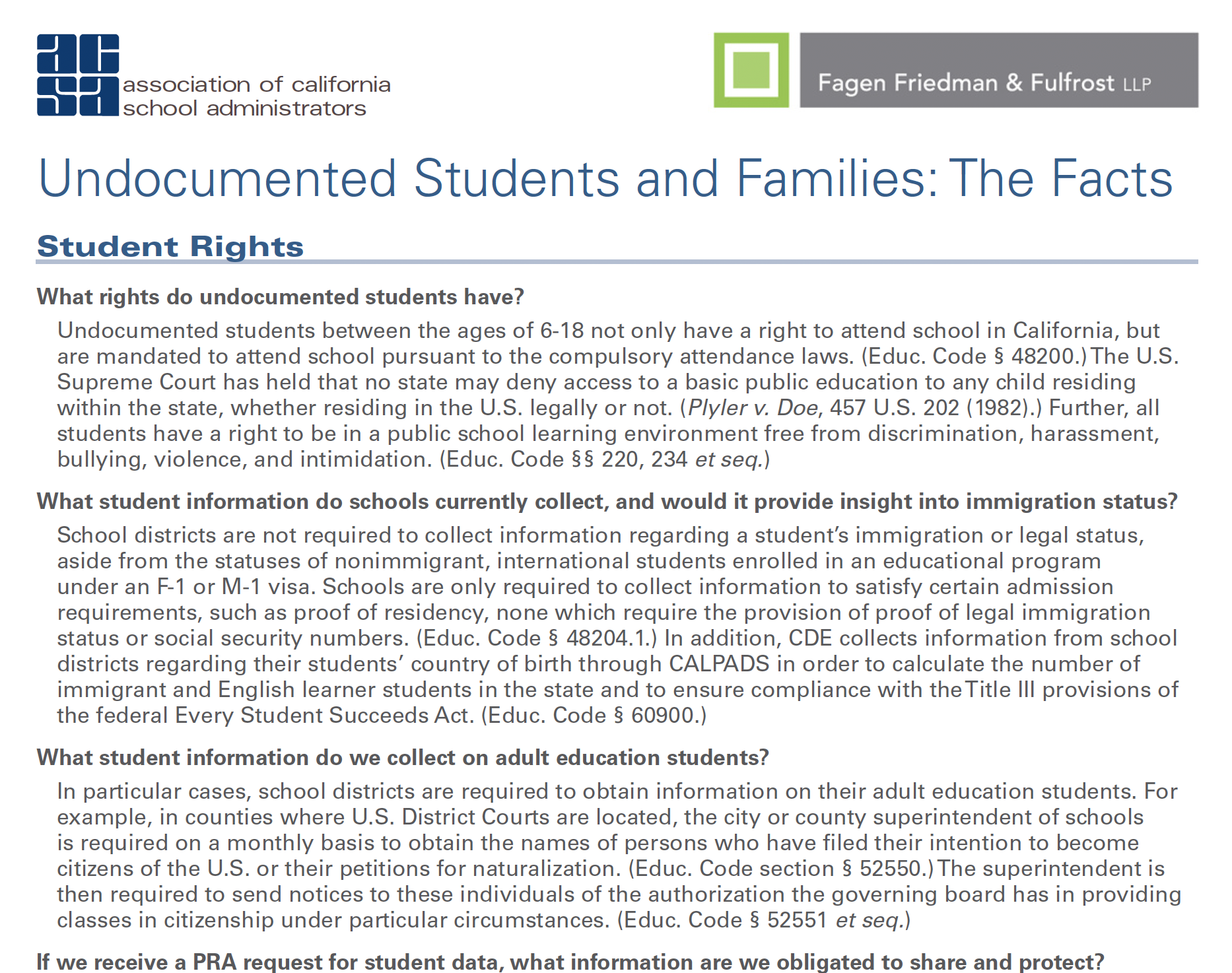Since 1919, continuation education has been an option for students ages 16 and older to earn their high school diploma. What can education administration leaders do to better serve the complex needs of students in the continuation or alternative schools? Some important factors (see this EdSource research) include:
- Apply more rigorous standards to yourself as an administrator, and your faculties, than those imposed by the state or district. Lead by example to promote honesty, fairness, kindness, responsible citizenship, and respect.
- Set clear academic goals for students in congruence with the administration’s goals: prevent students from dropping out or engaging in criminal activity, foster a positive school climate, and improve students’ English language and math skills. (According to Changing Places, English learner enrollment in the 11th grade is 14%, vs. 21.3% in continuation schools statewide.)
- Impose order on the school placement and intake process.
- Utilize student analytics and performance data to guide measurable change.
- Provide much-needed resources, such as supplemental appropriations to maintain small class size. Implement supportive policies that take the special needs of continuation schools into account, particularly in regard to how students are placed in the school and effective collaboration with external entities that provide needed supports for students as well as postsecondary pathways.
- Provide more specialized individual counseling sessions and educational services. Continuation students are likely to move from school to school and develop a nagging sense of instability and failure. They might also be young parents, caretakers for elderly family members, or full-time employees. Many at-risk students begin to improve their grades when they feel that they are being heard and cared for as individuals, and not as though they have been separated from their peers because adults do not have faith that they are able to meet basic educational expectations.
- Foster an open dialogue about housing instability and homelessness. Many students secretly face housing instability, a factor in their “at-risk” status, as determined by grades or credit deficiencies. Continuation students surveyed on the CA Healthy Kids Survey were three times more likely than comprehensive high schoolers to be in foster care or living with a [non-parent] relative. WestEd researchers even found that all students in the CHKS sample who reported living in transitory arrangements (in a shelter, on the street, in a car) were in a continuation or community day school (for expelled students). (Changing Places, Edley Jr. and Ruiz de Velasco, UC Berkeley, 2010). See the article linked above for ways to promote awareness of housing instability in your community.
Continuation education high school principals should be enthusiastic, empathetic, dedicated, and able to rally a skilled, motivated team to care for student needs.
“Where experienced principals were clear and proactive about their beliefs, the faculty and the students echoed their sentiments. Teachers said that principals who were very clear about their expectations empowered teachers who endorsed those beliefs and made work life uncomfortable for teachers who held themselves or their students to lower standards. Students, in turn, picked up on these attitudes and beliefs and… were unequivocal about the positive effect on their motivation to engage and learn. Some students seemed genuinely surprised by their own transformation into a “good student” since previously they had experienced only failure. Although they underscored the importance of extra help and time, most students seemed to feel that having their teachers and the principal regard them as teachable made all the difference.”
Great administrative leaders also find success with continuation students when they proactively reach out to their community. Since the public does not often know much about continuation schools, it can be extra beneficial for these schools to build a strong sense of community with local businesses, influencers, and stakeholders.
For further resources on this topic, check out these links:
- State Schools Chief Tom Torlakson Announces Model Continuation High Schools for 2017
- Website of the California Continuation Education Association (CCEA)
- PBS blog article by a former principal with links to the documentary “The Bad Kids” and partner resources: Educator Toolkit, Lesson Plans, and Professional Development Training Tools
- EdWeek partner content article “Holding California’s ‘Continuation’ Schools Accountable: An Investigation”
- LA Daily News June 2017 “California Board of Education rethinking how to measure alternative school performance”
- The Hechinger Report’s article “There’s no good way to know how California’s alternative schools are working”
- EdSource article with tips for young people without a high school diploma: No high school diploma? You’ve got options!
- CDE: Continuation Education Program Summary – Information on program purpose, services, outcomes, funding, students served, and results
- CDE: Application for a New Continuation High School – Information and application process for the establishment of a new continuation high school
- CDE: Model Continuation High School Recognition Program – Identifies and recognizes outstanding programs and creates a resource list of quality programs for school visitations
- CDE: Continuation Education – CalEdFacts – Part of CDE’s information and media guide about education in the State of California. For similar information on other topics, visit the full CalEdFacts
- CDE: Alternative Schools Accountability Model (ASAM) – Provides accountability for educational options schools serving very high-risk, highly mobile students. These schools include continuation, community day, county community, juvenile court, Division of Juvenile Justice, opportunity, and other alternative schools that meet stringent criteria set by the State Board of Education
- CDE: Voluntary and Involuntary Transfers – Information on the voluntary and involuntary transfer of pupils to continuation classes, programs, and schools
- CDE: Resources for Educational Options Programs – Information to support academic and social-emotional development and youth engagement in schools





























